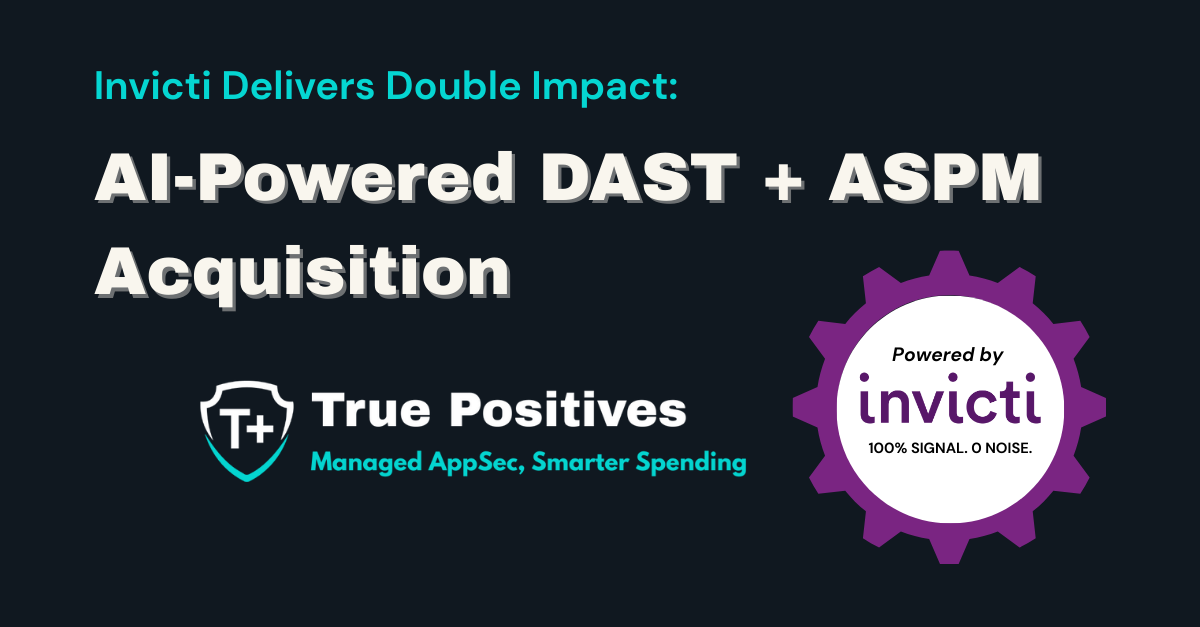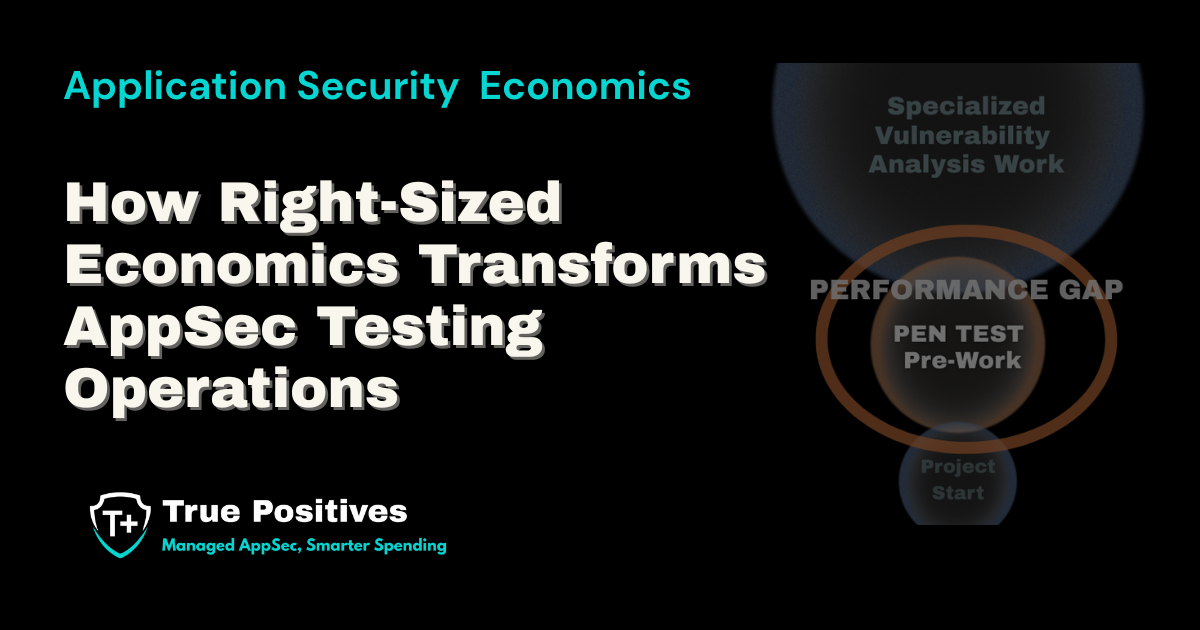SAST vs. DAST: Taking a Look at AppSec Testing
In the ever-evolving landscape of cybersecurity, safeguarding applications from vulnerabilities is paramount. Two prominent approaches to application security testing (AST) have emerged as essential tools in the developer's arsenal: Static Application Security Testing (SAST) and Dynamic Application Security Testing (DAST).
In this short guide, we will dive into both SAST and DAST, exploring some of their distinct characteristics, strengths, weaknesses, and ideal use cases. From this, we can begin to understand some of the nuances of these methodologies so developers can make informed decisions to fortify their applications against potential threats.
Understanding SAST: Proactive Vulnerability Detection
What is SAST?
SAST is a "white-box" testing approach that examines the source code or binary code of an application without executing it. It scrutinizes the codebase for inherent security flaws, such as coding errors, insecure configurations, or violations of coding standards. You can learn more about SAST here: What is Static Application Security Testing (SAST)?
How Does SAST Work?
SAST tools employ various techniques, including pattern matching, data flow analysis, and control flow analysis, to identify potential vulnerabilities. By analyzing the code structure, these tools can pinpoint issues like SQL injection, cross-site scripting (XSS), buffer overflows, and other common security weaknesses.
Advantages of SAST
- Early Detection: SAST identifies vulnerabilities early in the software development life cycle (SDLC), often during the coding or build phases. This allows developers to fix security flaws before they become embedded in the software, significantly reducing the cost and effort of remediation.
- Comprehensive Coverage: SAST tools can analyze the entire codebase, including third-party libraries, frameworks, and components. This ensures a comprehensive assessment of the application's security posture, uncovering vulnerabilities that might be overlooked by manual reviews or other testing methods.
- Developer-Friendly: SAST integrates smoothly into development workflows, IDEs, and CI/CD pipelines. This provides real-time feedback to developers as they code, enabling them to address security issues promptly and efficiently. Additionally, many SAST tools offer clear explanations and actionable recommendations, empowering developers to learn and improve their secure coding practices.
Limitations of SAST
- False Positives: While SAST tools are designed to identify potential vulnerabilities, they can sometimes flag code that is perfectly safe as potentially risky. This can lead to false positives, which can waste developers' time and potentially lead to valid vulnerabilities being overlooked if not carefully reviewed. The rate of false positives can vary depending on the complexity of the code and the sophistication of the SAST tool.
- Limited Runtime Analysis: SAST primarily focuses on analyzing the source code itself, and therefore, it cannot identify vulnerabilities that only become apparent when the application is running. This includes configuration errors, issues related to the runtime environment, and vulnerabilities that depend on user input or specific data flows. Such vulnerabilities are better addressed with dynamic application security testing (DAST) or interactive application security testing (IAST).
Understanding DAST: Simulating Real-World Attacks
What is DAST?
DAST is a "black-box" testing approach that analyzes an application's behavior while it is running. It simulates real-world attack scenarios, attempting to exploit vulnerabilities in the application's exposed interfaces, such as web forms, APIs, or network protocols. For a comprehensive understanding of DAST, you can refer to: What is Dynamic Application Security Testing (DAST)?
How Does DAST Work?
DAST tools interact with the application as an external attacker would, sending malicious inputs, probing for weaknesses, and observing the application's responses. By analyzing these interactions, DAST tools can identify vulnerabilities like SQL injection, XSS, command injection, and authentication bypass.
Advantages of DAST
- Runtime Vulnerability Detection: DAST excels at identifying vulnerabilities that only become evident when the application is running, interacting with its environment, and processing data. This includes configuration errors (e.g., misconfigured servers), authentication and authorization flaws, issues with session management, and vulnerabilities that depend on specific user inputs or data interactions.
- Realistic Attack Simulation: DAST tools simulate real-world attacks by actively probing the application for weaknesses. This provides a more accurate assessment of the application's security posture than static analysis alone. By emulating attacker behavior, DAST can uncover vulnerabilities that might not be apparent through code review or manual testing, such as SQL injection, cross-site scripting (XSS), and insecure direct object references (IDOR).
- No Source Code Access Required: DAST operates as a "black box" testing methodology, meaning it doesn't require access to the application's source code or internal workings. This makes DAST suitable for testing third-party applications, legacy systems, or situations where the source code is unavailable or difficult to obtain. It's also useful for assessing the security of APIs and web services.
Limitations of DAST
- Limited Code Coverage: DAST tools primarily focus on testing the external behavior of an application. They interact with the application through its interfaces (web pages, APIs, etc.), simulating real user interactions. This approach can miss vulnerabilities hidden in unexposed code paths or internal components that are not directly accessible from the outside.
- Late Detection: DAST is typically performed later in the software development life cycle (SDLC), often after the application has been deployed to a testing or staging environment. This means vulnerabilities might not be discovered until later stages, increasing the potential cost and complexity of remediation.
- False Negatives: Just as DAST can sometimes report false positives (flagging something as a vulnerability when it's not), it can also produce false negatives. This means that a DAST tool might miss a genuine vulnerability, giving a false sense of security. This can happen due to factors like the tool's limited understanding of the application's logic, incomplete test coverage, or the dynamic nature of certain vulnerabilities that may only manifest under specific conditions.
SAST vs. DAST: A Comparative Analysis
|
Feature |
SAST |
DAST |
|
Testing Approach |
White-box |
Black-box |
|
Analysis Scope |
Source code/Binary code |
Running application |
|
Vulnerability Focus |
Coding errors |
Runtime vulnerabilities |
|
Detection Timing |
Early SDLC |
Late SDLC/Production |
|
Code Coverage |
Comprehensive |
Limited to exposed areas |
When to Use SAST and DAST
SAST and DAST are complementary approaches that address different aspects of application security. To achieve comprehensive security testing, it is advisable to leverage both methodologies in tandem:
- SAST: Ideal for identifying vulnerabilities early in the SDLC, enabling developers to address them proactively.
- DAST: Ideal for detecting runtime vulnerabilities and assessing an application's resilience against real-world attack scenarios.
This provides full coverage and minimize the weaknesses of each while maximizing their strengths.
Final Thoughts
The choice between SAST and DAST isn't a matter of one over the other. Both SAST and DAST play crucial roles in ensuring the security and integrity of applications. Moreover, as the complexity of applications grows and the sophistication of attacks continues to increase, it becomes even more important to leverage each to mitigate a wider range of vulnerabilities.
By recognizing the differences of each and understanding their unique strengths plus limitations, developers will be able to better incorporate these methodologies into their development processes which will ultimately lead to more secure, resilient software for end users.
.png)
About True Positives
True Positives is a cybersecurity services firm focused on application security. Our team possesses over 100 years of combined enterprise AppSec and DevSecOps expertise. Through our flagship managed services, organizations access enterprise-grade security testing without internal overhead. Our value-added reseller partnerships enable enterprises to construct robust in-house programs with proven tooling and implementation expertise. Serving clients in either capacity, we focus on strengthening security assurance while maintaining development velocity and optimizing program costs. Contact us to discuss your security testing requirements.
%2008%2014%202025%20(4).webp?width=1200&height=400&name=Copy%20of%20%20T%2B%20Logo%20Webpage%20Header%20(500X170)%2008%2014%202025%20(4).webp)


